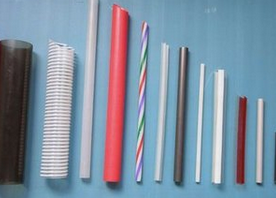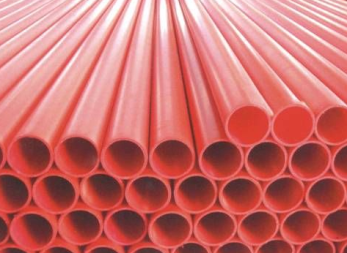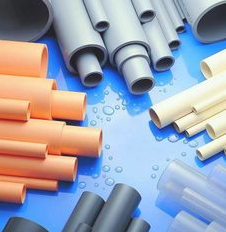There are many kinds of plastic tubing, and we mainly introduce three types: PVC tubing, CPVC tubing and UPVC tubing.
(1) PVC tubing
According to the hardness and the properties of materials PVC, Polyvinylchloride, (SG1-SG7), and the density are about 1.4g/cm³. What is under SG4 is generally called soft product. It needs to add a lot of plasticizers during the molding, and it is mainly used for making artificial leader, wire and cable insulation and sealing elements. Hard product above SG5 has application for various pipes, such as drainage tube, post tube, electric tube and so on. And it can also be used to make a variety of plastic sheets. PVC molding shrinkage rate is 0.6-1.5%, which has good mechanical properties, excellent electrical performance, and self-extinguishing. And there also are some other advantages, such as good chemical stability and low price, so it is has a very wide range of applications. However, the service temperature is not high, less than 80℃, which affect its development.
(2) CPVC tubing
Chlorinated Polyvinyl Chloride (CPVC) is a kind of important modified PVC which is manufactured by post-chlorination of PVC. This product is white or light yellow, tasteless, odorless and non-toxic loose particles or powder. After post-chlorination of PVC, the solubility of resin and chemical stability both increase. And the maximum service temperature can be up to 110℃and the long-term use temperature is 95℃. Therefore, CPVC is a new type of engineering plastics with a wide application prospect.
(3) UPVC tubing
Using PVC resin as carrier, there are many excellent characteristics. At the same time, using the world famous CA Zn composite heat stabilizer in the process of high temperature and melt of resin, UPVC can capture, inhibit and absorb the extraction of neutralizing hydrogen chloride, and UPVC have double bond addition reaction with polyene structure to replace active and unstable hlorine atom out of the molecules. Thus we can effectively scientifically control catalytic degradation and oxidative decomposition when resin is in a molten state.


